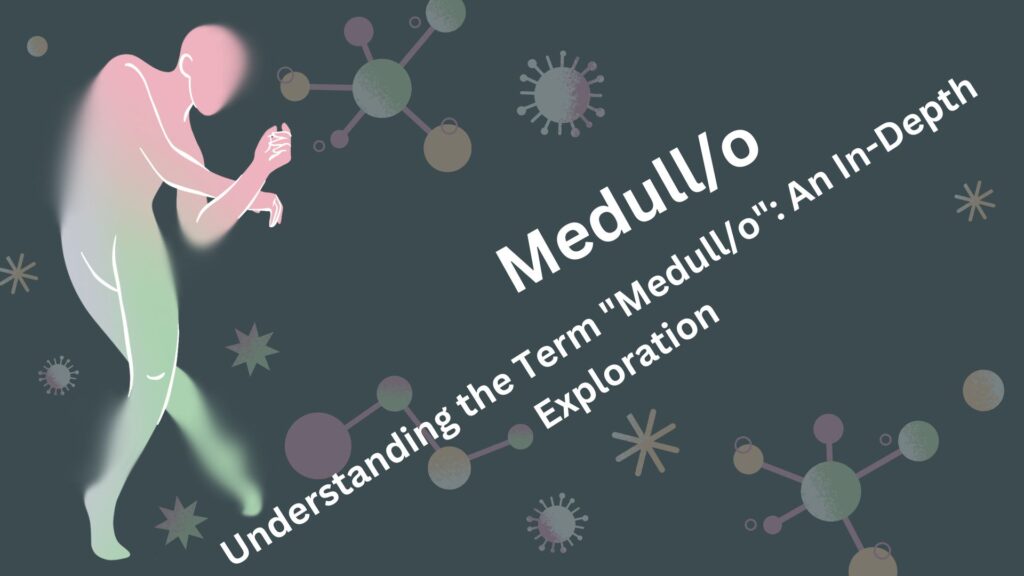Medull/o is a prefix used in medical terminology that refers to the medulla. A vital structure found in various parts of the body. The term is derived from the Latin word “medulla. Meaning marrow or innermost part, and is commonly associated with the central nervous system and the adrenal glands. In this article. We will explore the different contexts in which medull/o is used. Its significance in human anatomy, and the medical conditions related to it.
Introduction to Medull/o
The prefix medull/o is a versatile term that can be linked to different parts of the body. Including the brain, adrenal glands, and bones. It generally refers to the inner or core part of an organ or structure. Understanding the contexts in which medull/o is used is crucial for medical professionals. Students, and anyone interested in human anatomy and physiology.
The Medulla Oblongata: A Critical Part of the Brain
What is the Medulla Oblongata?
The medulla oblongata is a section of the brainstem located at the lower part of the brain, just above the spinal cord. It plays a crucial role in regulating vital autonomic functions such as breathing, heart rate, and blood pressure. Damage to this area can lead to severe and life-threatening consequences.
Functions of the Medulla Oblongata
Respiratory Control: The medulla oblongata controls the rhythm and depth of breathing.
Cardiovascular Regulation: It regulates heart rate and blood pressure by sending signals to the heart and blood vessels.
Reflex Actions: The medulla is responsible for reflexes like coughing, swallowing, and vomiting.
Medical Conditions Related to the Medulla Oblongata
Medullary Stroke: A stroke affecting the medulla can result in loss of autonomic control, leading to respiratory failure and cardiovascular instability.
Arnold-Chiari Malformation: A condition where brain tissue extends into the spinal canal, affecting the medulla and causing symptoms like headaches, balance issues, and muscle weakness.
The Adrenal Medulla: A Hormone Powerhouse
What is the Adrenal Medulla?
The adrenal medulla is the inner part of the adrenal glands, which are located on top of each kidney. The adrenal medulla is responsible for producing catecholamines, primarily adrenaline (epinephrine) and noradrenaline (norepinephrine), which are critical for the body’s fight-or-flight response.
Functions of the Adrenal Medulla
Adrenaline Production: The adrenal medulla releases adrenaline, which prepares the body for quick action by increasing heart rate, dilating airways, and boosting blood flow to muscles.
Noradrenaline Production: This hormone helps maintain blood pressure and enhances the fight-or-flight response by narrowing blood vessels and increasing alertness.
Medical Conditions Related to the Adrenal Medulla
Pheochromocytoma: A rare tumor of the adrenal medulla that leads to excessive production of adrenaline, causing symptoms like high blood pressure, rapid heartbeat, and anxiety.
Adrenal Medullary Hyperplasia: An overgrowth of the adrenal medulla that can result in similar symptoms to pheochromocytoma, though it is usually less severe.
Medullary Cavity: The Core of Bone Health
What is the Medullary Cavity?
The medullary cavity, also known as the marrow cavity, is the central cavity of long bones where bone marrow is stored. The bone marrow within the medullary cavity is responsible for producing blood cells, including red blood cells, white blood cells, and platelets.
Functions of the Medullary Cavity
Hematopoiesis: The medullary cavity houses bone marrow, which produces blood cells essential for oxygen transport, immune defense, and blood clotting.
Structural Support: The medullary cavity contributes to the strength and flexibility of long bones.
Medical Conditions Related to the Medullary Cavity
Osteomyelitis: An infection of the bone and medullary cavity that can lead to severe pain, fever, and potential bone destruction.
Leukemia: A type of cancer that affects the bone marrow, leading to abnormal blood cell production and compromised immune function.
Medical Conditions Associated with Medull/o
The term medull/o is associated with several medical conditions, many of which can be life-threatening if not properly managed. These conditions can affect the medulla oblongata, the adrenal medulla, or the medullary cavity of bones.
Medulloblastoma: A highly malignant brain tumor that originates in the cerebellum but can spread to the medulla oblongata.
Central Medullary Syndrome: A rare condition involving the spinal cord’s central medulla, leading to symptoms like paralysis, loss of pain and temperature sensation, and autonomic dysfunction.
Diagnostic Tests Involving Medull/o
Imaging Tests
MRI and CT Scans: These imaging techniques are used to visualize the medulla oblongata, adrenal medulla, and medullary cavity. They can help diagnose tumors, infections, and structural abnormalities.
Bone Marrow Biopsy: A procedure that involves extracting a small sample of bone marrow from the medullary cavity for analysis, commonly used to diagnose leukemia and other blood disorders.
Blood Tests
Catecholamine Levels: Blood tests can measure the levels of adrenaline and noradrenaline, helping diagnose adrenal medulla disorders like pheochromocytoma.
Complete Blood Count (CBC): This test evaluates the production of blood cells in the medullary cavity, aiding in the diagnosis of conditions like leukemia.
Treatment Options for Medullary Conditions
Medulla Oblongata Treatments
Surgical Intervention: In cases of medullary stroke or Arnold-Chiari malformation, surgery may be necessary to relieve pressure on the medulla oblongata.
Adrenal Medulla Treatments
Surgical Removal: Tumors like pheochromocytoma may require surgical removal of the affected adrenal gland.
Medullary Cavity Treatments
Chemotherapy: Leukemia treatment often involves chemotherapy to target abnormal blood cells produced in the medullary cavity.
Conclusion
The term medull/o encompasses several critical parts of human anatomy, including the medulla oblongata, adrenal medulla, and medullary cavity. Understanding the functions and potential disorders associated with these structures is vital for both medical professionals and patients. Whether it’s the brainstem regulating vital functions, the adrenal glands producing essential hormones.
FAQs
What does medull/o mean in medical terms?
Medull/o refers to the medulla, which is the inner core or marrow of various organs, including the brain, adrenal glands, and bones.
What are the symptoms of medullary thyroid carcinoma?
Symptoms may include a lump in the neck, difficulty swallowing, and changes in voice, often without pain.
How is medulloblastoma treated?
Treatment usually involves a combination of surgery, radiation therapy, and chemotherapy.
Can medullary conditions be prevented?
While some conditions like tumors cannot be prevented. Maintaining overall health and managing risk factors like hypertension can reduce the risk of medullary complications.
What is the prognosis for patients with medull/o-related conditions?
The prognosis varies depending on the specific condition. Its severity, and how early it is diagnosed. Early intervention often leads to better outcomes.







